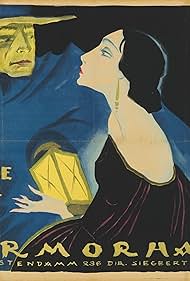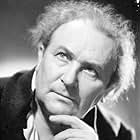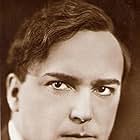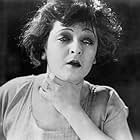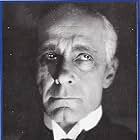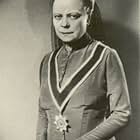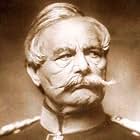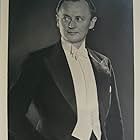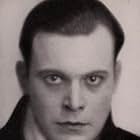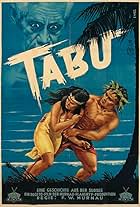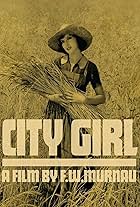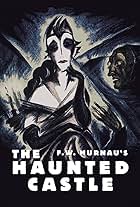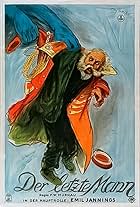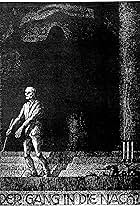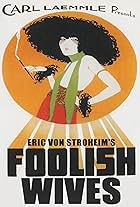When farmer Rog dies, his son Peter stays, but Johannes can not be satisfied with such a condition (and servant Maria's love) and finds a job as old Count Rudenberg's secretary. His ambition... Read allWhen farmer Rog dies, his son Peter stays, but Johannes can not be satisfied with such a condition (and servant Maria's love) and finds a job as old Count Rudenberg's secretary. His ambition leads him to charm Gerda, the Count's unique daughter. But when he discovers that Count's... Read allWhen farmer Rog dies, his son Peter stays, but Johannes can not be satisfied with such a condition (and servant Maria's love) and finds a job as old Count Rudenberg's secretary. His ambition leads him to charm Gerda, the Count's unique daughter. But when he discovers that Count's second wife Helga will soon inherit a field that only he knows his underground is full wi... Read all
Photos
- Director
- Writers
- All cast & crew
- Production, box office & more at IMDbPro
Storyline
Did you know
- TriviaThis movie was considered lost for many years. In 1978, an almost complete print was found in the estate of an Italian priest who had organised screenings in mental hospitals. The same was true of The Passion of Joan of Arc (1928).
- ConnectionsFeatured in Der Weg nach Murnau (2003)
Most of the action takes place on a farm owned by the Rog family, who give fealty to Count Rudenburg. In the role of the Rog patriarch, the great actor Werner Krauss is nearly wasted. Krauss does a bog-standard death scene ... but then, unexpectedly, just before he dies he makes an "ach, forget it" gesture with one hand, neatly defining his character just as he expires.
Old Rog has two sons, who come dangerously close to the hoary cliché of "good brother, bad brother". Modest Peter merely wants to work the farm. Johannes wants something more out of life. The most impressive thing about this film is how the character of Johannes is written (and performed by actor Vladimir Gaidarov). It would have been easy to make Johannes a clear-cut villain. Instead, he's an opportunist and a manipulator, and somewhat unethical, but he never quite descends to outright criminality.
Early in the film, there's a brief flashback to an earlier period, apparently the 17th century. When this movie was made in 1922, the fade-out and the dissolve were already established in film language as the transitional devices for flashbacks. Murnau doesn't use them here. Instead, a shadow passes across the screen image, almost like a primitive example of an optical wipe.
Lya De Putti gives an excellent performance as the Count's daughter. De Putti has a reputation as an exotic screen vamp, but she really wasn't very beautiful. Here, her mouth is lipsticked into a grotesque cupid's bow, and her eyebrows are plucked into a shape that's both too elaborate and asymmetrical with it. A close-up reveals her fingers to be short, thick and ungainly. Yet, when she strides across the screen in full riding habit and spurs, haughtily pulling a pair of riding-gloves onto her hands while spurning Alfred Abel's advances -- "Excuse me. My horse is waiting." -- she is very sexy indeed.
The photography is excellent throughout. Several times, we see the Rog family's house in long shot, in the midst of an absolutely flat plain. This shot reminded me of a very similar shot in George Stevens's "Giant". Later, an oil derrick appears near the Rog house. Again, this also happened in "Giant". George Stevens was a brilliant director who didn't have to borrow from anyone else, yet the similarities in these two films are so strong that I can't help wondering if Stevens was influenced by this film.
Murnau's sure hand wavers just occasionally. At several points during this drama, small objects (coins, the fragments of a torn document) are dropped or flung to the floor. With one exception, all of these moments are shown in full shot. They would have been far more effective if Murnau had inserted a closer shot of the coins rolling, the fragments fluttering. During one exterior sequence, while De Putti and Gaidarov are emoting in the foreground, nobody seems to notice a little black dog running through the snowdrifts behind them. The dog isn't in the script, but he's there anyway.
Stella Arbenina gives a beautifully subtle and poignant performance in a sympathetic role, except for one ludicrous moment when her character goes out into deep snow wearing high-heeled shoes. The modest farmer Peter is played by Eugen Klöpfer, an actor I've never seen before. In close-ups of Klöpfer, I was amused to discover that he had two small moles on his left cheek ... in exactly the same places where Lon Chaney also had facial moles. Klöpfer wears heavy makeup in this role, yet the blemishes appear to be genuine. Is it possible that Eugen Klöpfer was actually Lon Chaney, moonlighting under another name? Probably not. I'll rate this movie 7 points out of 10. The plot has many flaws, but the photography and the performances (and Murnau's direction) go a considerable distance to compensate.
- F Gwynplaine MacIntyre
- Sep 13, 2004
- Permalink
Details
- Runtime1 hour 38 minutes
- Color
- Sound mix
- Aspect ratio
- 1.33 : 1
Contribute to this page

